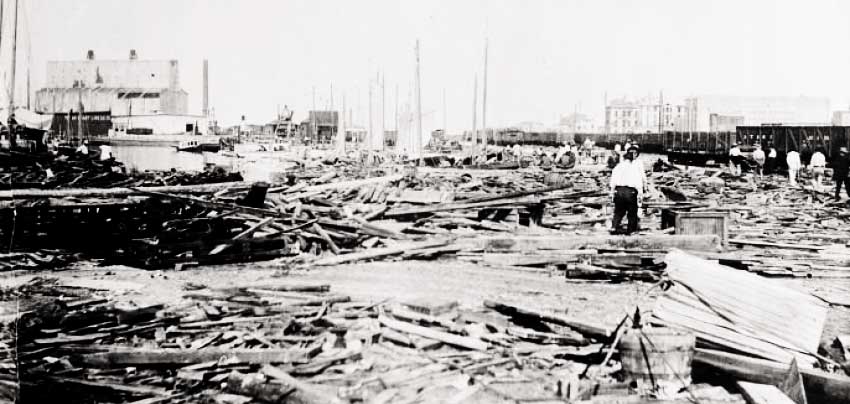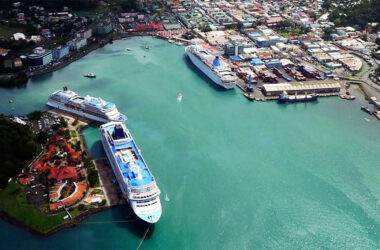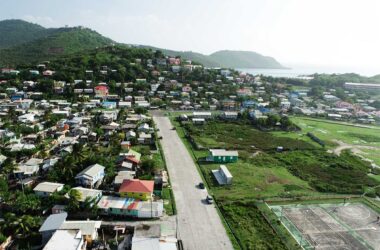THE (almost) consensus belief within the scientific community and laymen at large is that due to “human-caused climate change”, hurricanes are more powerful now than they’ve ever been.
After the mammoth hurricanes Harvey, Irma and Maria hit the Caribbean region and the United States last year, it became a confirmation of that very widespread belief. “See!” they said, “How climate change has strengthened these hurricanes.”

However, as devastating as those hurricanes were, they were not the most powerful in recorded history.
In fact, most of the most powerful hurricanes in recorded U.S. history (many of which sadly have also affected us here in the Caribbean); occurred before the year 1968 (more on the significance of that date further down); a fact which definitely takes away from the argument that hurricane intensity is strengthened by “human-caused climate change.”
Of the top 5 most powerful hurricanes in U.S. History, three took place before 1970; and two before 1900; yet another dent in the “human-caused climate change” strengthens hurricanes, argument.
The deadliest hurricane in U.S. history was the Great Galveston Hurricane which killed 8000 people and destroyed the town. It took place, not last year or ten or twenty or even thirty years ago; but over one hundred years ago.
This eyewitnesshistory.com excerpt, describes the devastation that storm caused; devastation which came, long before the “human-caused climate change” claims arose:
“When they awoke on the morning of September 8, 1900, the 38,000 residents of Galveston, Texas were unaware that this day would be their city’s last. They had no idea that before the day was done, 8,000 of their fellow citizens would perish with the city. The culprit was a hurricane. The storm swept in off the Gulf of Mexico packing winds up to 135 mph – a category 4 storm in modern terminology. The storm propelled a fifteen-foot surge of water before it; easily swamping the 8.7-foot-high island that Galveston called home. Together, the wind and the water destroyed everything in their path and created the worst natural disaster in America’s history.”
“There was little warning and no defence. In the early morning, high tides flooded some of the inland streets. Yet, this was not unusual in a city that barely rose above sea level. Heavy swells began to appear, but the mostly blue sky prompted a confidence that nothing out of the ordinary was about to occur. Most residents reasoned that even if a storm was on its way, they had weathered storms before. As a relative of one victim later recalled: “Mama didn’t want to leave. She’d been through it before and wasn’t worried. It had never been that bad.” However, Galveston had never seen a storm like this one.”
“By mid-morning rain clouds took over the sky and the wind began to pick up. By mid-afternoon the hurricane hit with an intensity that only increased as darkness descended. The storm made its exit during the early morning hours of the next day; the total devastation it left in its wake revealed only with the rising sun. The bodies of the storm’s victims littered a landscape strewn with debris in which few buildings remained standing.”
“The city immediately began the task of clearing up the wreckage and rebuilding. To bolster its defences, the city actually raised its buildings by as much as 17 feet by pumping sand beneath their foundations. A thick, sturdy seawall was then built along the island’s ocean front. But Galveston was never the same; once the busiest port in Texas, with the promise of becoming the “New York of the South,” the storm convinced shippers to move north to Houston’s safer harbour.”
The above excerpt is just one example of the horrors that hurricanes have brought to mankind throughout human history; not just during the last 50 years.
As reported in the Guardian: “Fifty years ago, the Stanford Research Institute (SRI) delivered a report titled Sources, Abundance, and Fate of Gaseous Atmospheric Polluters to the American Petroleum Institute (API)… The report, unearthed by researchers at the Centre for International Environmental Law, is one of the earliest attempts by the industry to grapple with the impacts of rising CO2 levels, which Stanford’s researchers warned if left unabated “could bring about climatic changes” like temperature increases, melting of ice caps and sea level rise.”
“The year was 1968, and the term “global warming” would not appear in a peer-reviewed academic journal until 1975.” The article continues.
However, hurricanes as powerful as Galveston, Indianola and the Labour Day Hurricane of 1935 (and officially the most powerful hurricane on record in U.S. history); all took place well before that 1968 date; when researchers from Stanford predicted, that rising CO2 levels “could bring about climatic changes.” [my emphasis]
With such a substantial number of all-time powerful hurricanes occurring before the so-called human-caused climate change era, the argument that this “change” has increased hurricane intensity, should be subjected to far more stringent scrutiny than it hitherto has been.















